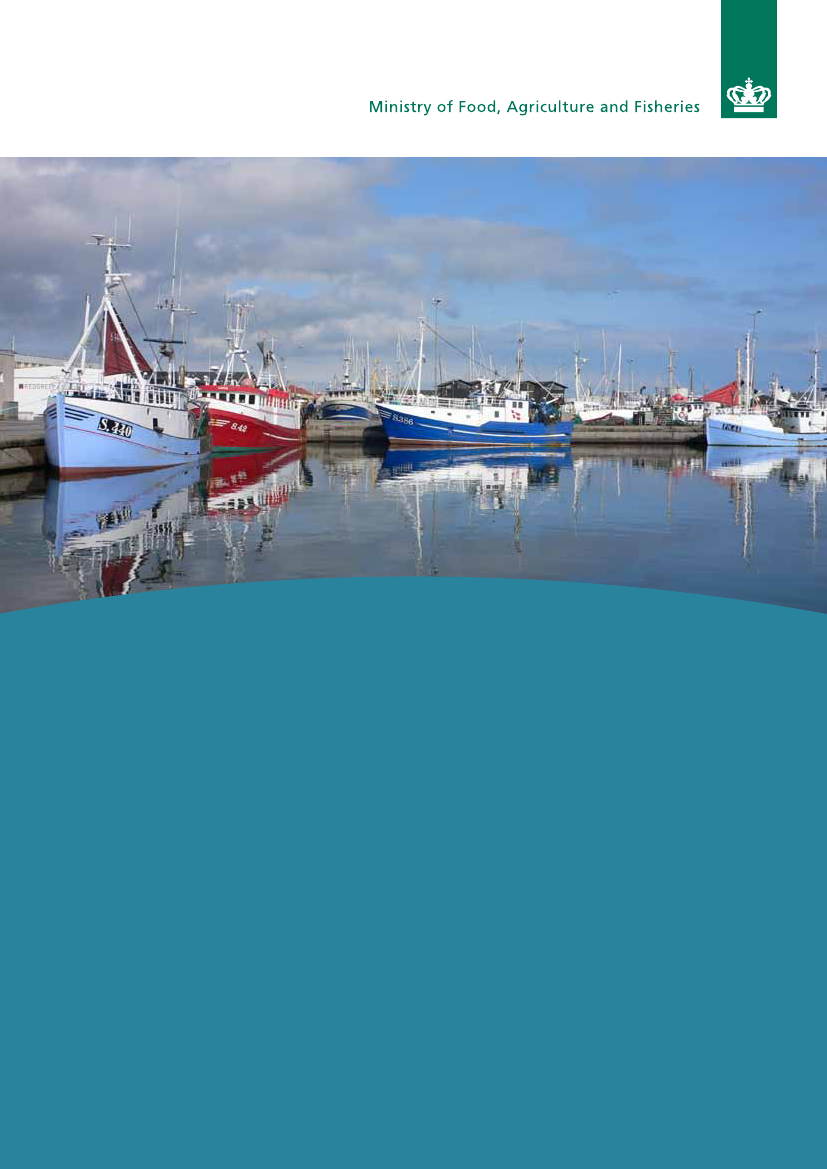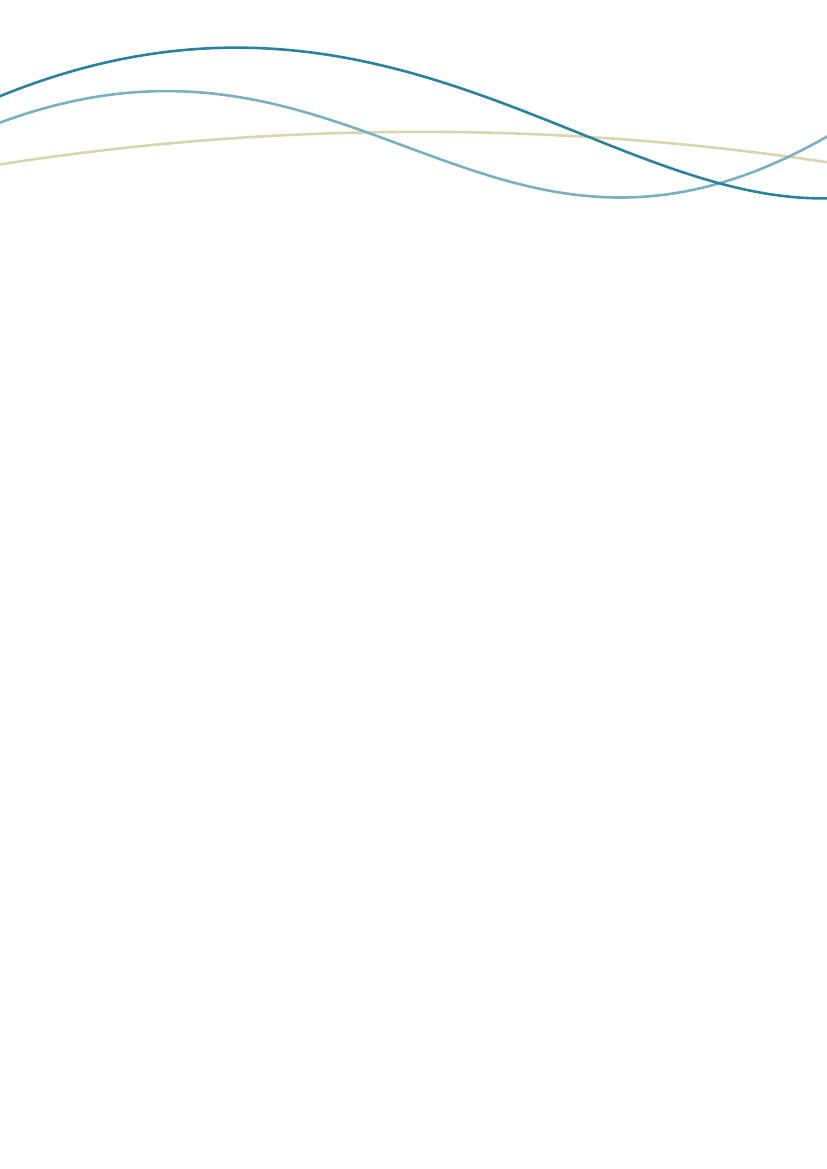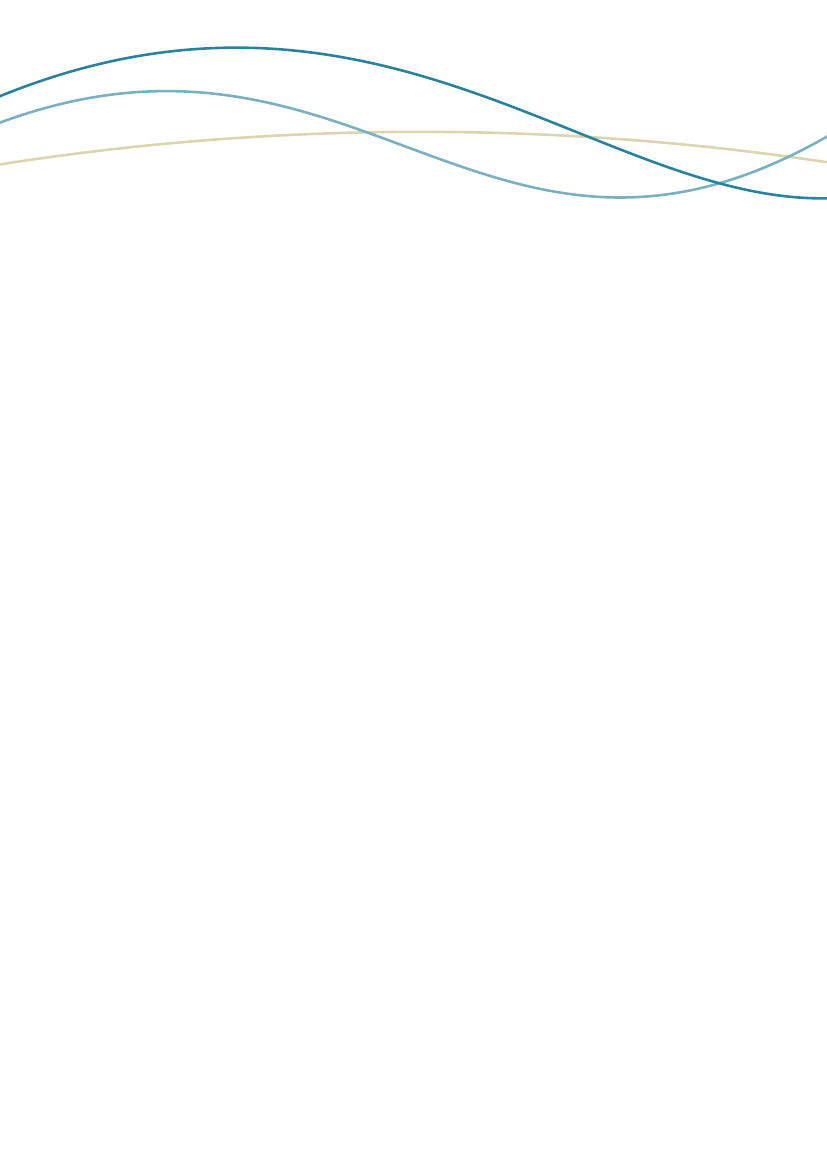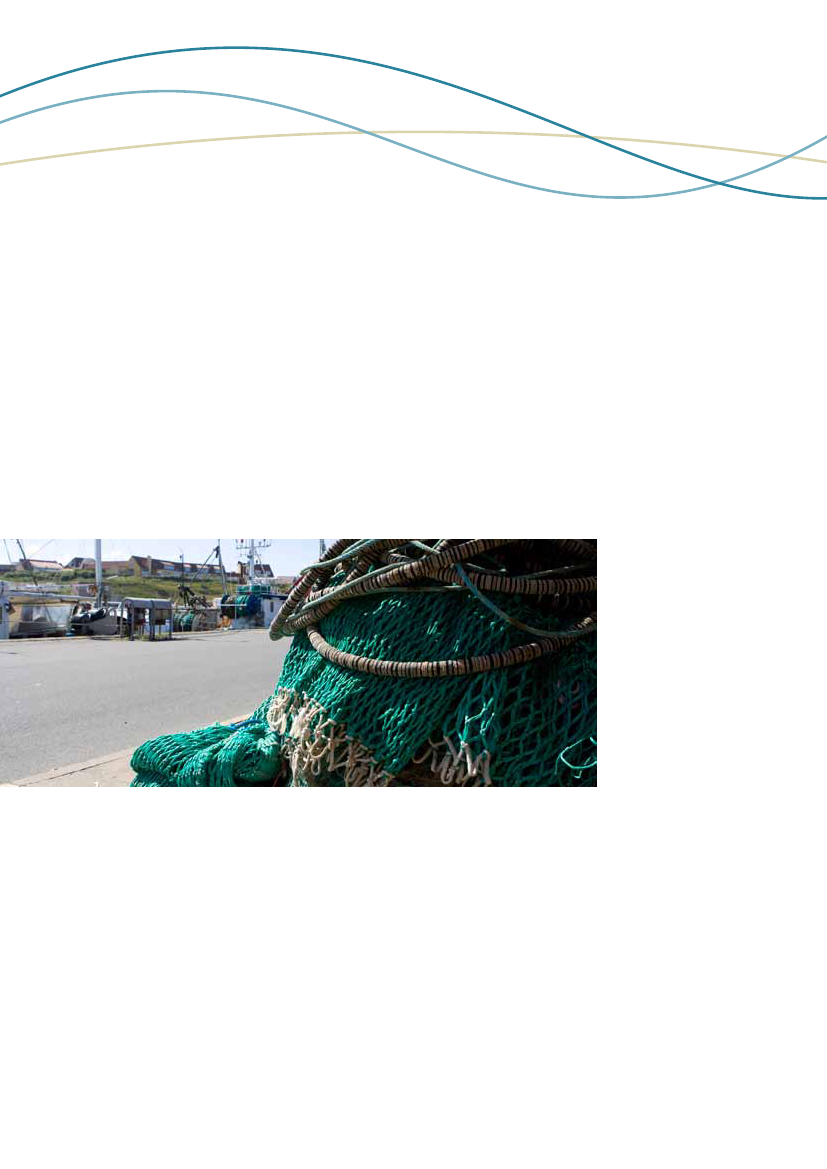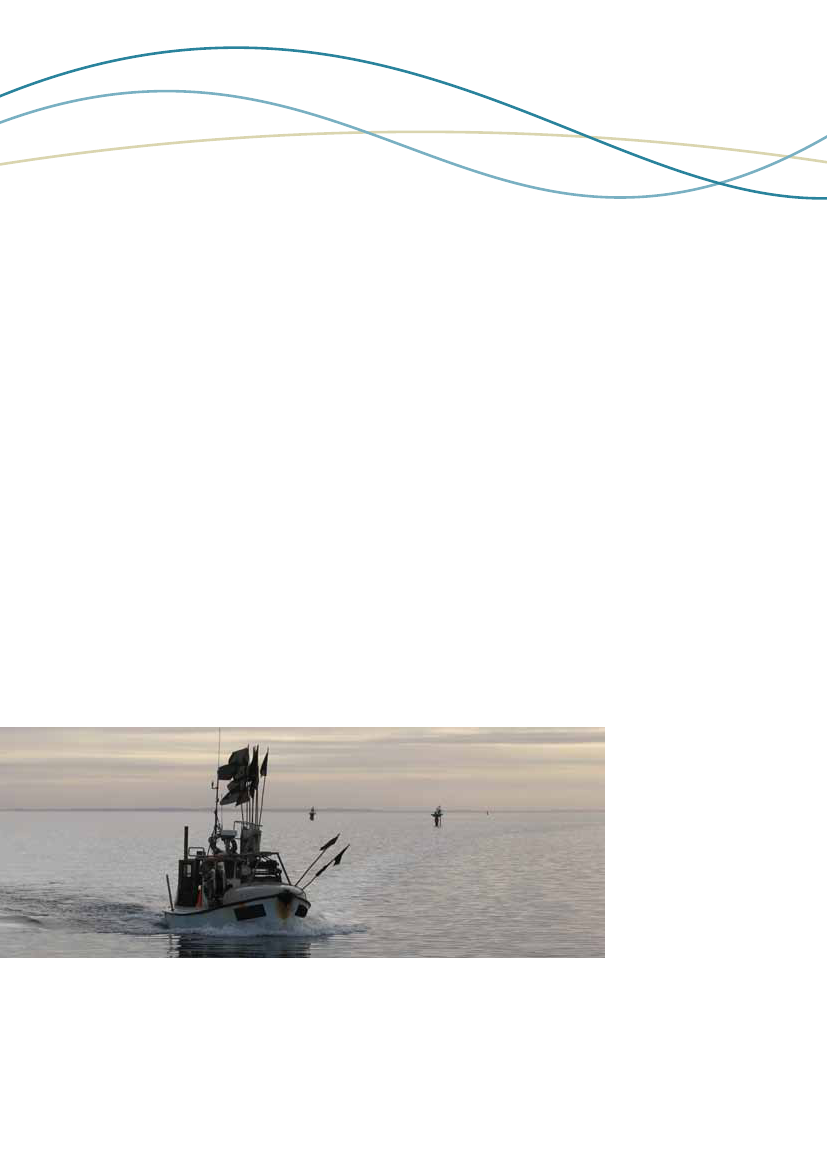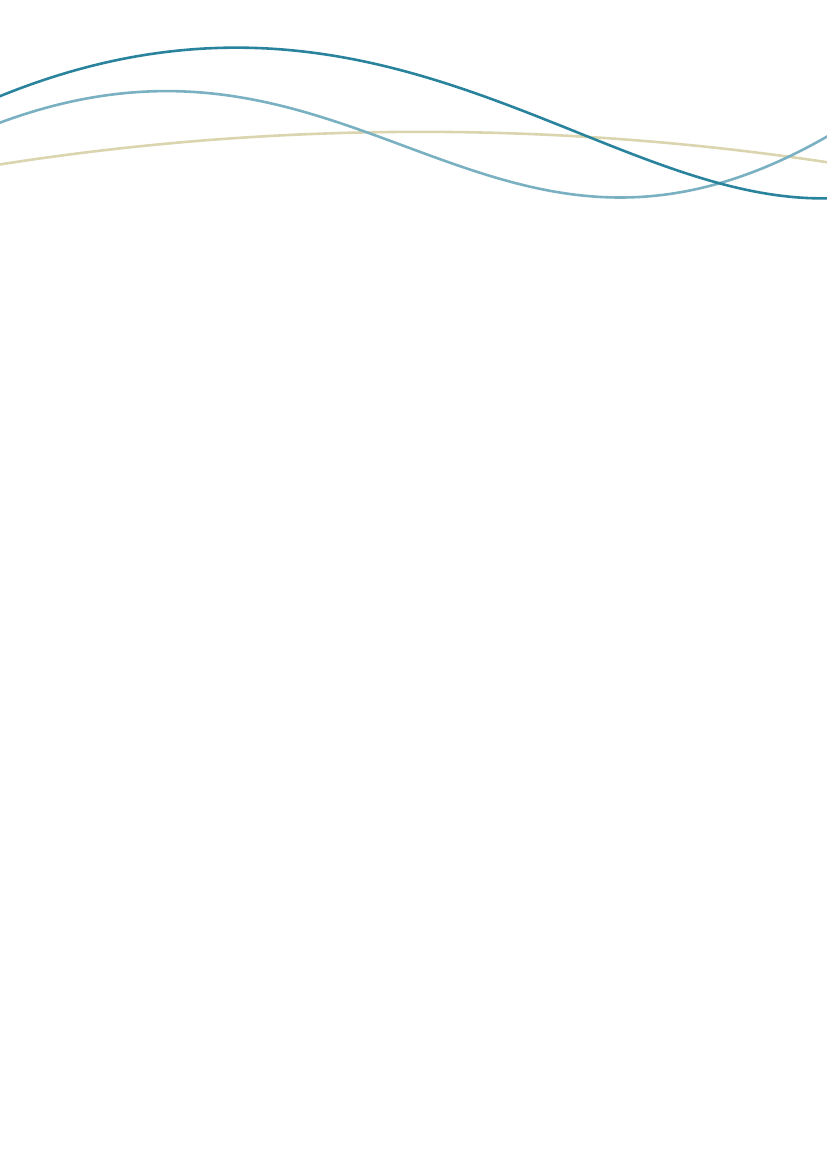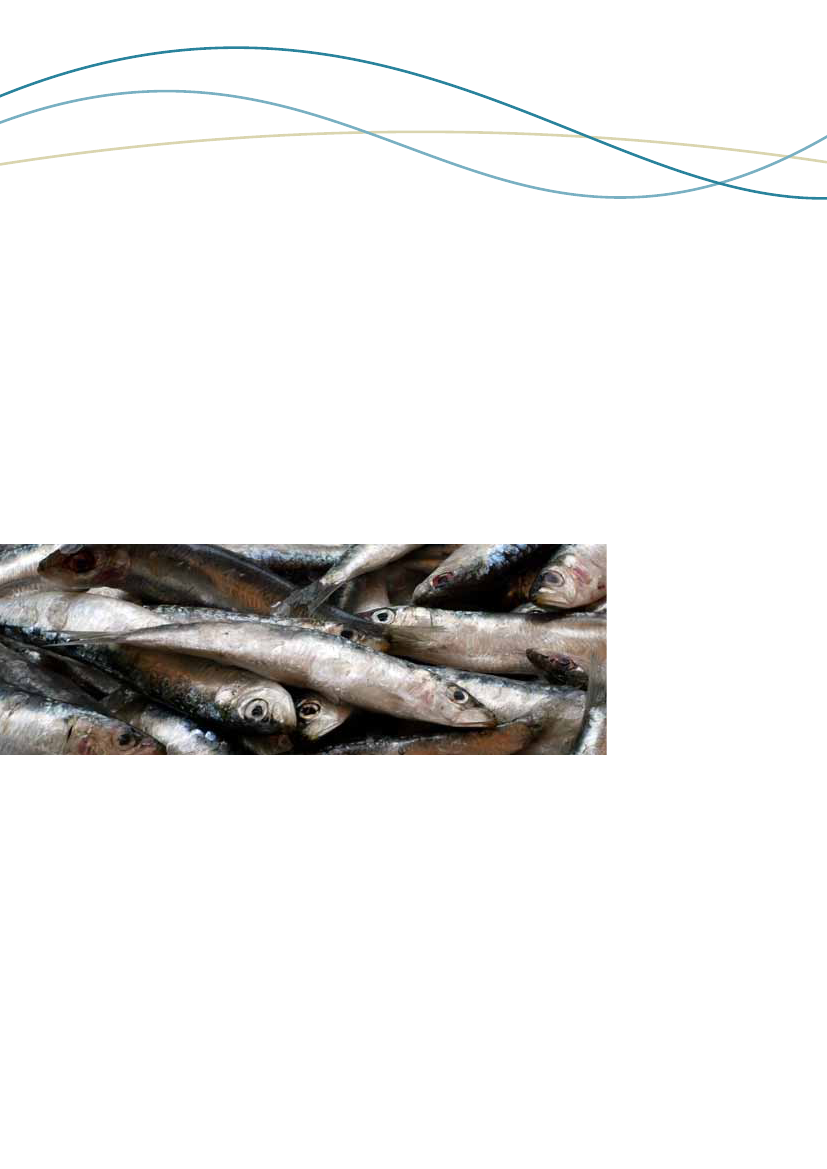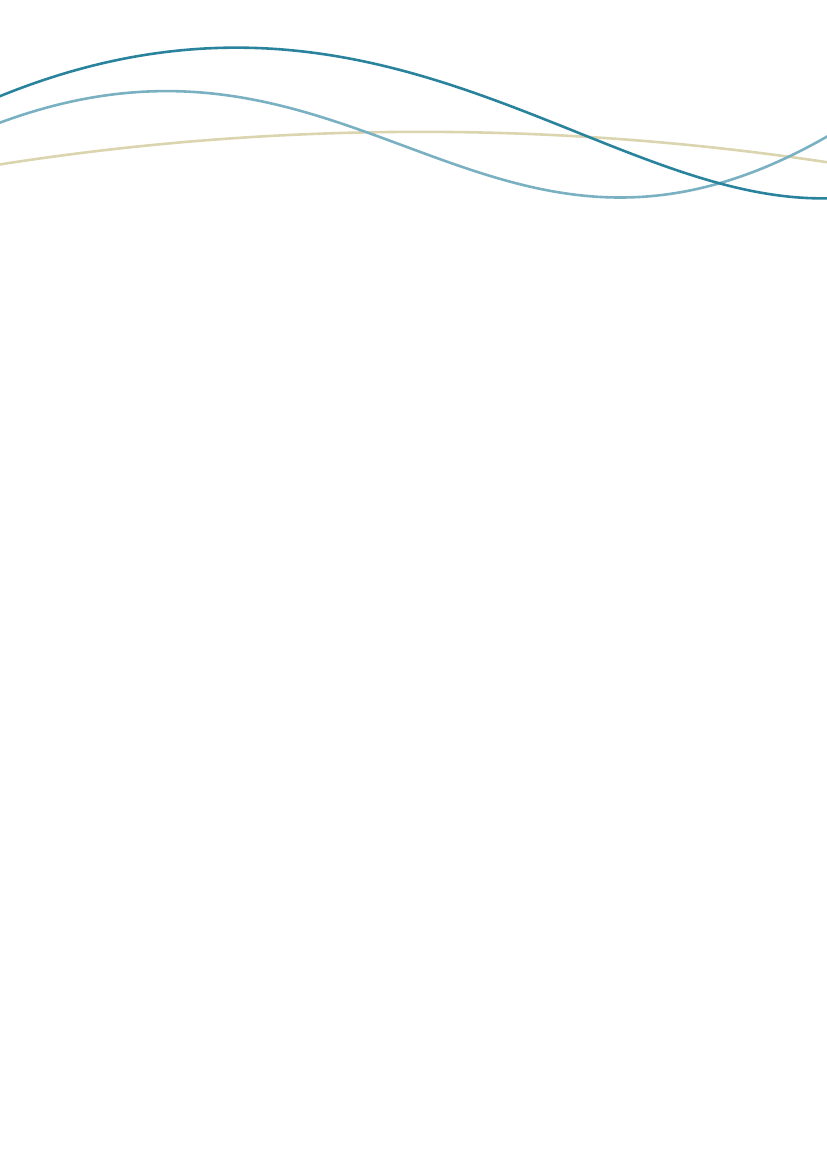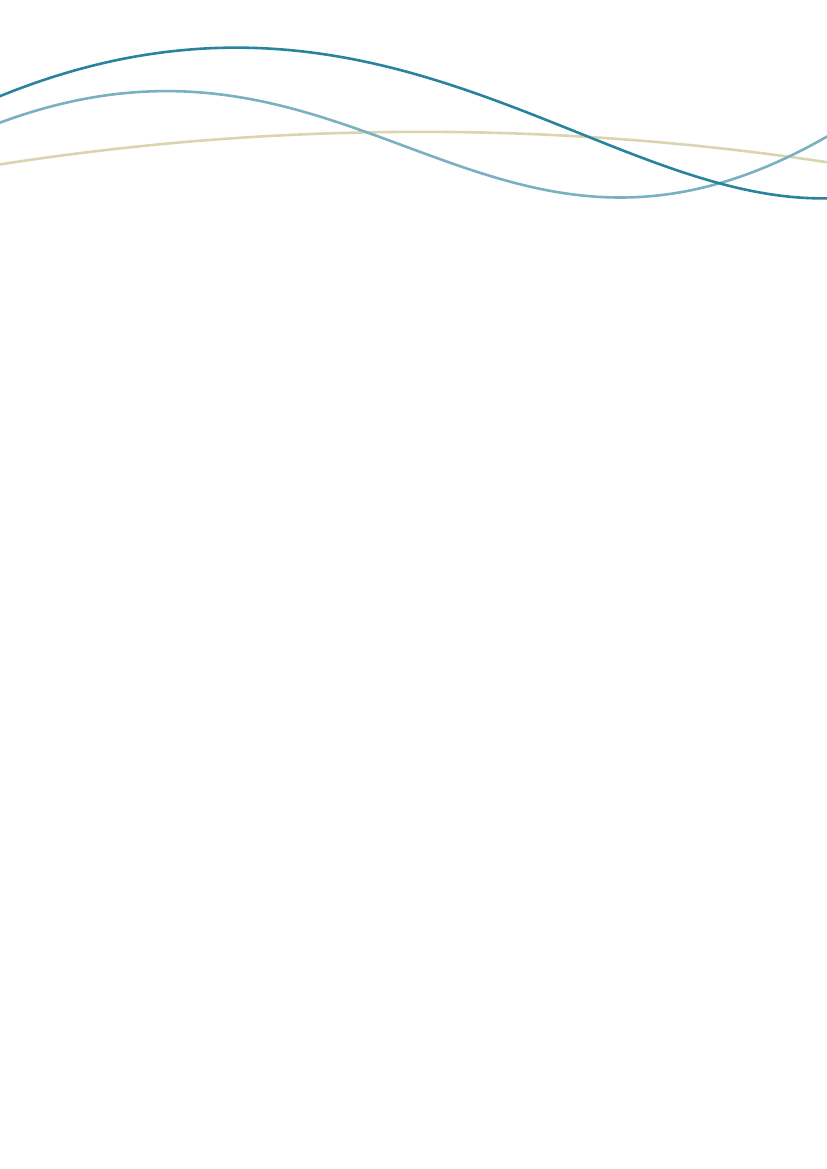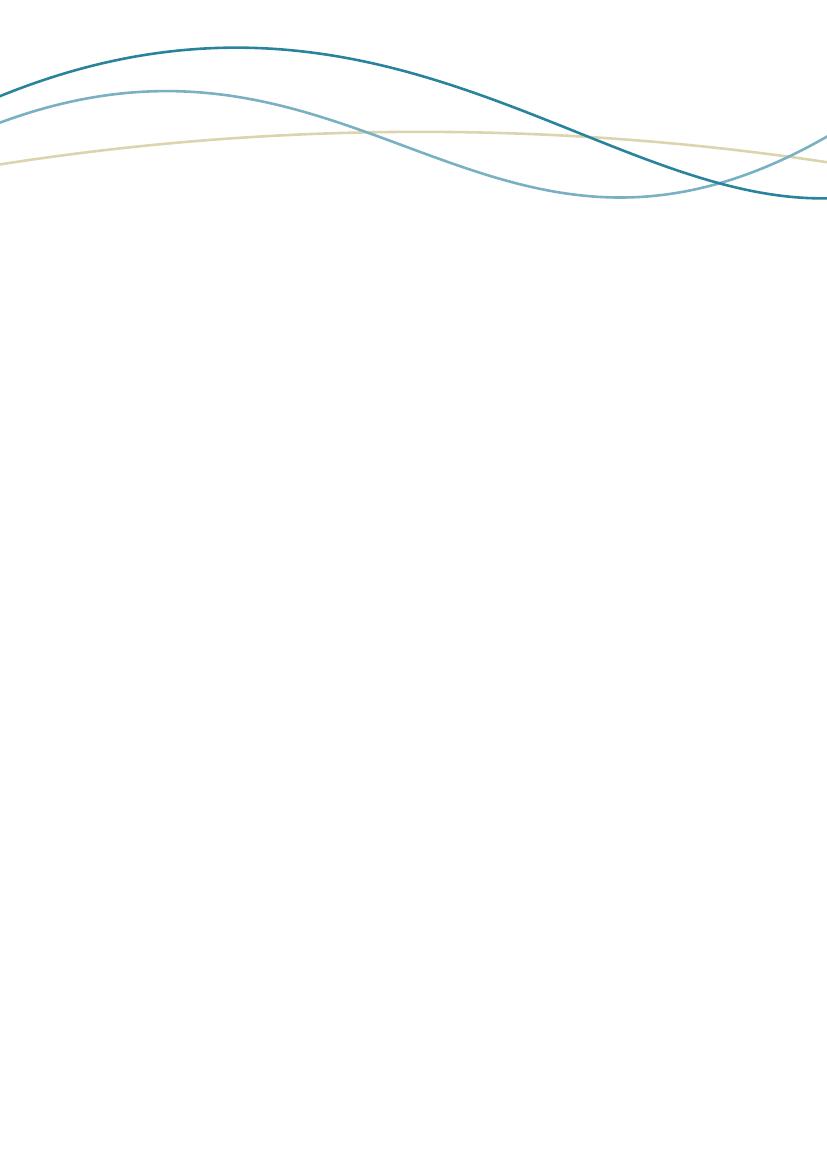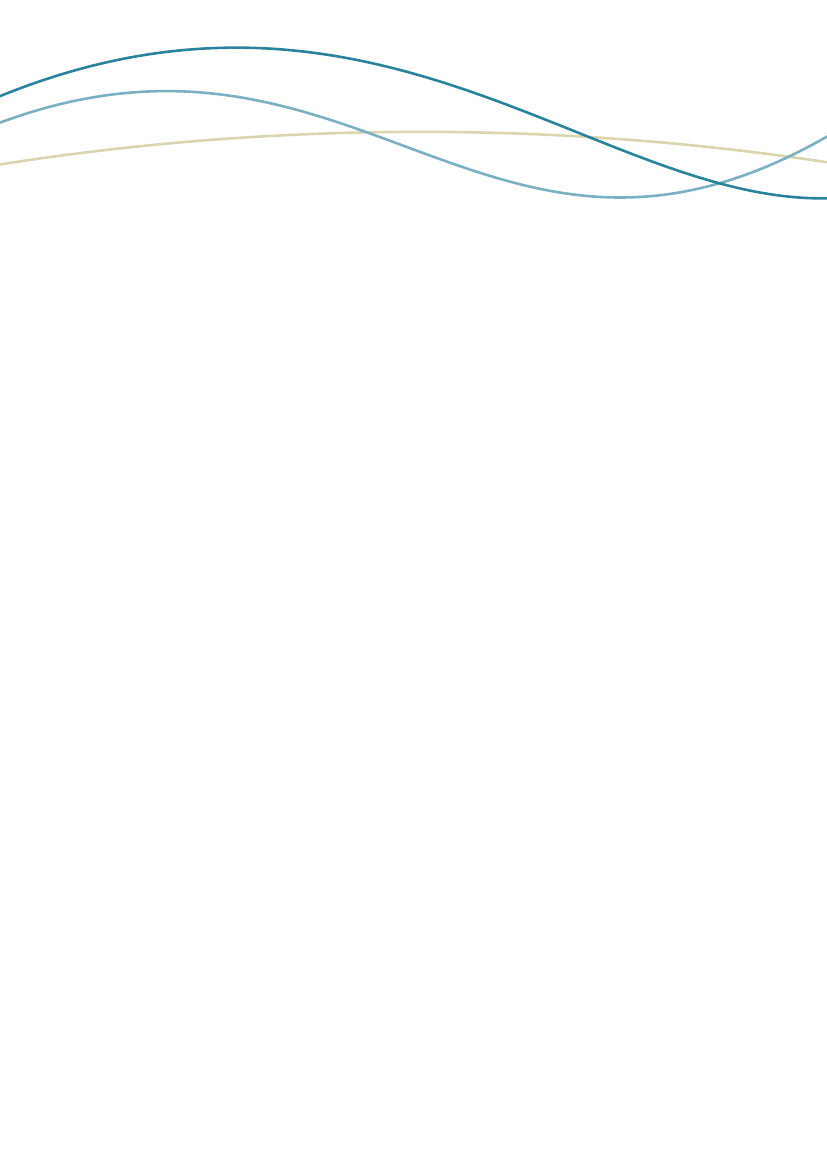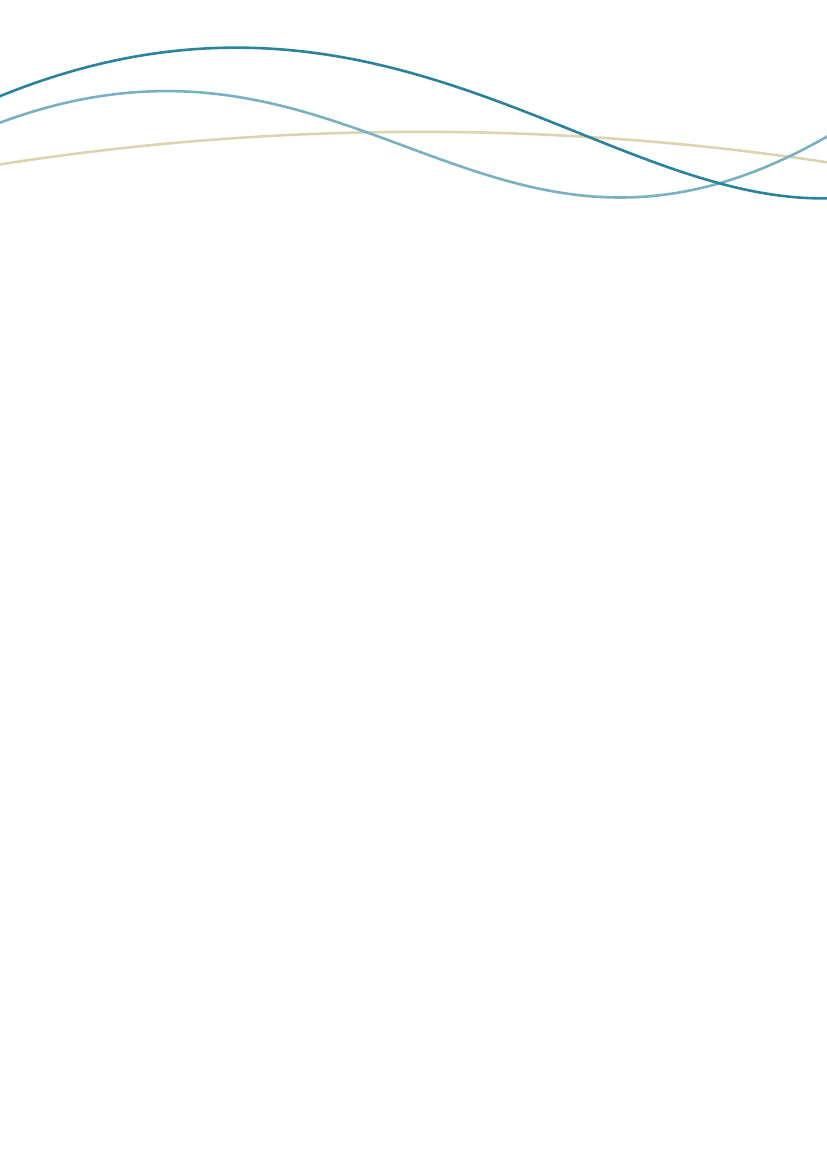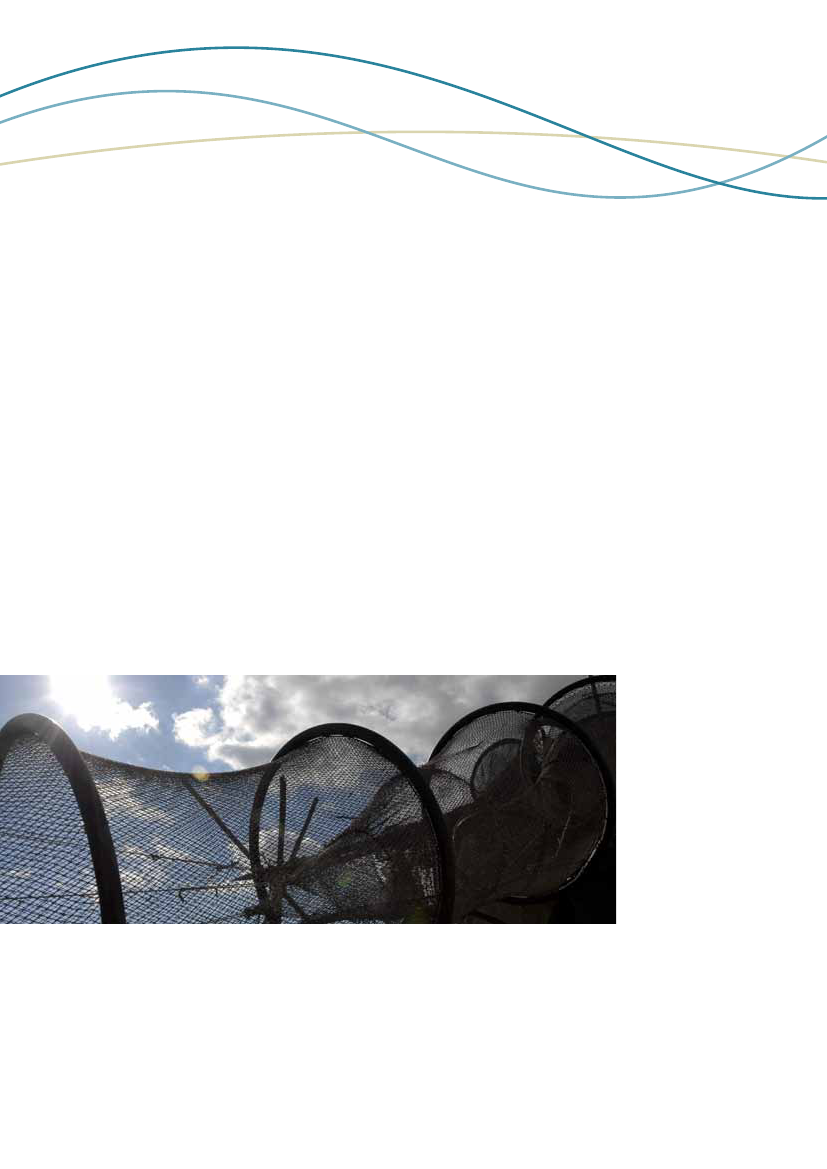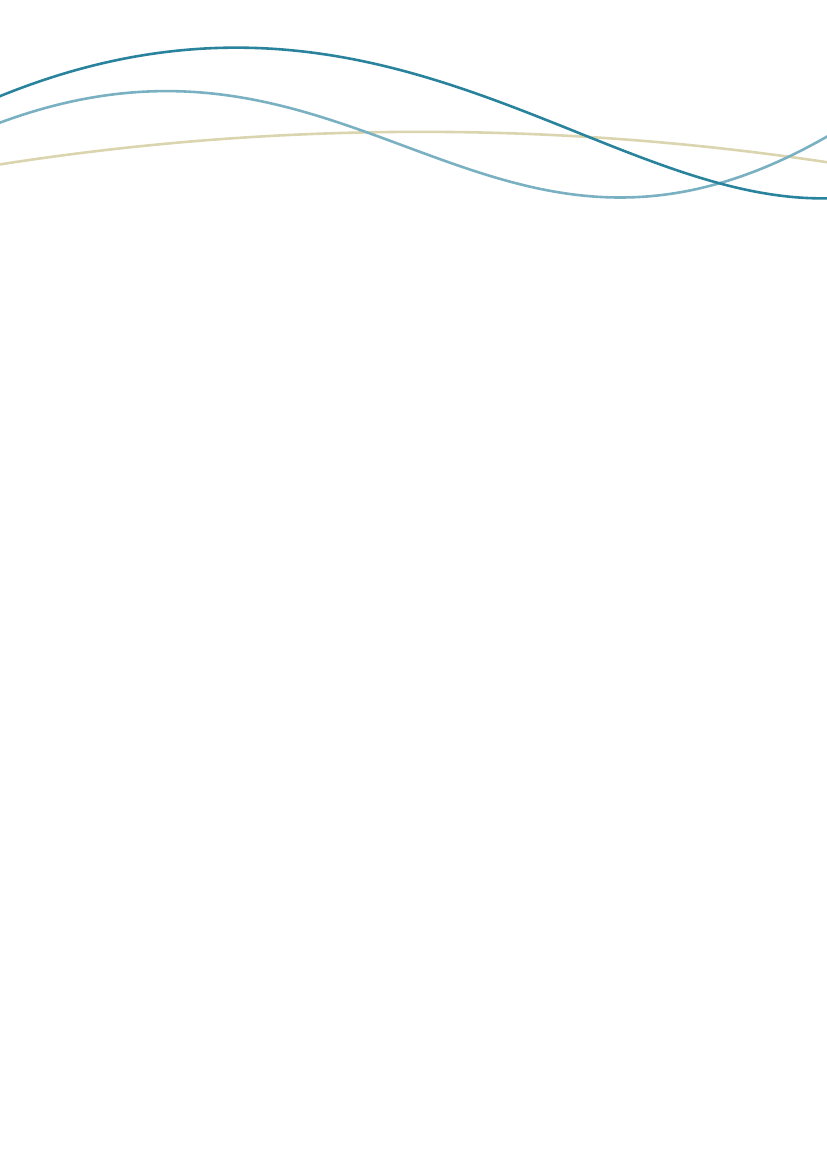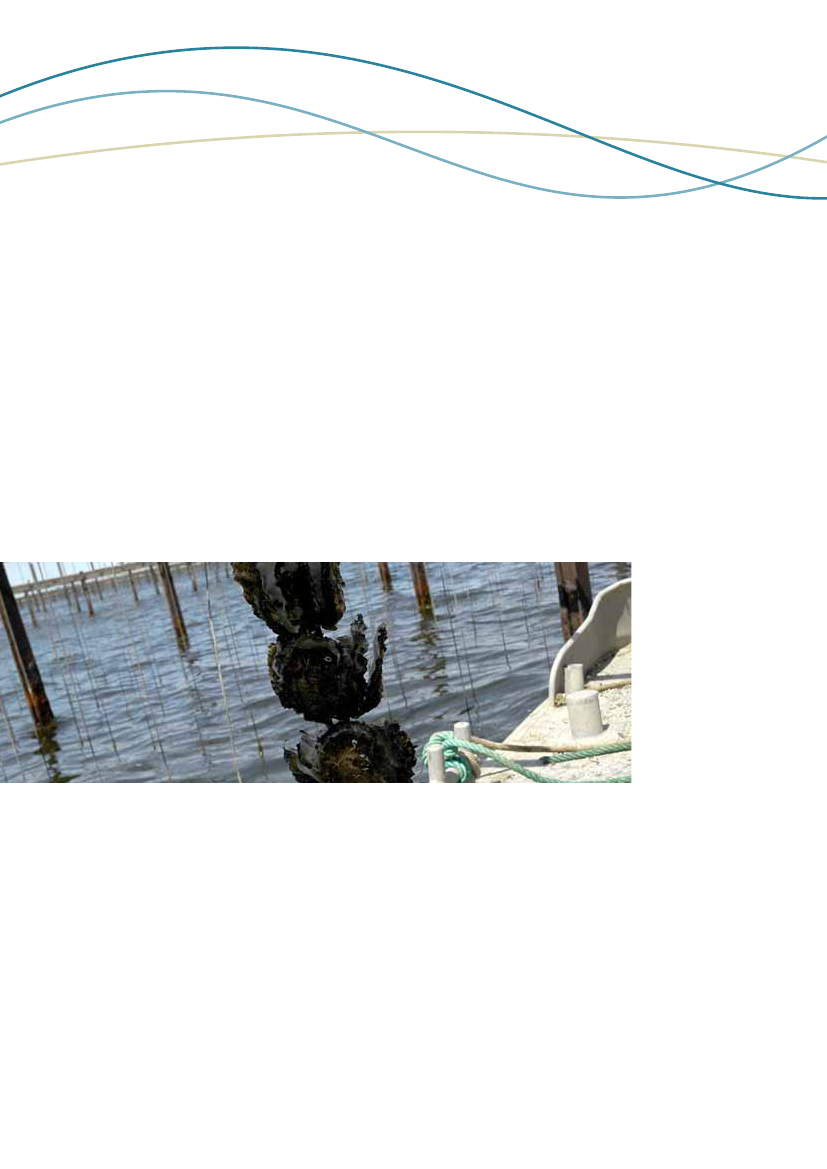Udvalget for Fødevarer, Landbrug og Fiskeri 2009-10
FLF Alm.del Bilag 103
Offentligt
Comments From the Danish GovernmentTo The Commission’s Green Paper on theReform of the Common Fisheries Policy
Ministry of Food, Agriculture and Fisheries2009
Table of contentSummaryIntroductionCentral objective and decision procedures ina reformed Common Fisheries PolicyThe main aims of the CFP and their priorityThe need for the political level to move from short termdecisions to longer term policy - leaving the details on implementationto comitology and regional cooperation between Member States
1344
4
Management of fishery in a reformed Common Fisheries PolicyThe need for simple technical conservation measures that promotes more selective fishingCatch quotas as the future management systemThe knowledge base for the policyThe need to develop more simple control rules and toapply a risk based approach in the enforcement of the rulesThe continuation of the principle of relative stabilityProtection of small-scale coastal fleets
6667788
The future market and structural policy forfisheries and the role of aquacultureTrade and markets – change to the CMO is neededThe current regulation of fleet capacity should continueStructural policy and public financial supportDevelopment of a coherent aquaculture policy in the EU
9991010
The environmental dimension of the future Common Fisheries PolicyAnnexDanish summary (Dansk resumé)
1112
Comments From The Danish Government To The Commission’s Green Paper
.
Reform of the Common Fisheries Policy
2
SummaryA Danish translation of the summary is annexed to this paper.This Paper represents the response from the Danish Government to the European Commission’s GreenPaper on the Reform of the Common Fisheries Policy1.The EU’s Common Fisheries Policy (CFP) has become more and more complex. Increasingly detailed ruleshave not supported a management where fisheries resources are exploited optimally. A reformed andsimplified CFP must ensure a sustainable fishery in terms of stock utilization and in relation to ecosystemswhich meet the agreed international long term environmental goals.It is important to integrate the environmental dimension and the CFP. The prerequisite for fishing beinga sound economic activity in the future is the sustainable exploration of the resources both in the shortand longer run. The crucial task is to reduce catches of unwanted fish. It should be done by giving priorityto the development of selective gears and catch methods. EU rules which can lead to discards should beabolished.In general the TACs and quota system has not succeeded in ensuring a sustainable exploitation of thestocks. The way forward is to gradually change the TACs and quota system from landing quotas to catchquotas that reflect that all fish caught are accounted for. In a catch quota system the individual fishermanmust be able to fully document the correct quantity and registration of the catches. This can be done byusing electronic documentation in the form of a camera fitted on board the vessel.Concerning capacity of the fishing fleets, it is the Danish view that fleet adaptation in a competitiveeconomy could be achieved through individual transferable quota (ITQ) like systems. However the compe-tence to decide on possible establishment and implementation of such systems should fully be left to theMember States.The overarching EU responsibility concerning safeguarding the fish stocks in the environment, safeguard-ing equal competition and supporting research and innovation should be maintained. But it should onlybe the principles and strategic framework that is dealt with by the Council and the European Parliament,leaving the details for Comitology procedures. Furthermore the possibilities of the regional aspect of theCFP should be explored, both the further development of regional cooperation (e.g. The ScheveningenGroup) between authorities and further involvement of non governmental stakeholders at the regionallevel. But it must take place within informal structures without new bureaucratic setups.The responsibility and competence concerning the control task should remain with the Member Stateswith supervision, guidance and cross national coordination at EU level. Quantitative targets for thenumber of inspections should as far as possible be replaced by qualitative targets, which can documentthat the control effort is relevant and effective, and based on risk management.The Danish Government holds the opinion that the intervention system under the Common MarketOrganisation (CMO) does not function in a satisfactory way. The intervention system needs fundamentalchanges and maybe the system should be abolished. The aims of the CMO must be reconsidered. Thefinancial support should be transferred from direct price intervention towards measures that support thecompetiveness of the fisheries products and the sector, combined with a focus on sustainable fishing.On a global scale it is the point of view of the Danish Government that the EU should strengthen the ef-forts in working for a liberalization of the global trade with fisheries products. Failing this task could as aconsequence mean job losses and higher prices on fish products.It is important to ensure sufficient relationship between the aims of a reformed Common Fisheries Policy1
COM(2009) 163, 22 April 2009Comments From The Danish Government To The Commission’s Green Paper.
Reform of the Common Fisheries Policy
1
and the European Fisheries Fund (EFF). Financial support should be directed towards innovation (e.g. moreselective gear), pilot projects and marketing of sustainable products from fisheries and aquaculture.A coherent EU policy for aquaculture should be developed in order to obtain a simplified and uniformlegislative framework for the sector, taking into account the environmental dimension.The fisheries policy, in line with other sector policies which use the resources of the sea, will have to bepart of an overall framework for managing the sea. Integration of fisheries policy in relation to, amongothers, ecosystem considerations, Natura 2000 areas and physical operations in the EEZ (Oil drilling, wind-mills etc.) is required.This Paper supplements the Danish report “Report on a new European fisheries policy” of 12 December2008 (http://www.fvm.dk/Yield_of_Fish.aspx?ID=24957) and the paper “Developing aquaculture in the EUof April 2009 (http://www.fvm.dk/Akvakultur.aspx?ID=11145).
Comments From The Danish Government To The Commission’s Green Paper
.
Reform of the Common Fisheries Policy
2
IntroductionThe objective of the EU’s Common Fisheries Policy (CFP) is to ensure that living marine resources are ex-ploited in an economically, environmentally and socially sustainable way. The fisheries policy has in generalnot lived up to this objective.With the reform of the fisheries policy in 2002, greater focus was placed on sustainability, and in thoseareas where Danish vessels fish the vicious circle of increasing fishing pressure and the negative develop-ment of the fishing stocks was generally broken, and fishing pressure on several of the most importantcommercial stocks has fallen.But there is a continued need for a revision of the fisheries policy. The EU’s Common Fisheries Policy hasbecome more and more complex. Increasingly detailed rules have not supported a management wherefisheries resources are exploited optimally. There continues to be a considerable volume of discards in theEuropean fishery which reflects the fact that the current management does not sufficiently promote asustainable fishery.Member States together with the Commission have for several years tried to make the rules less compli-cated. Despite these efforts the need for continued work towards further simplification remains obvious.The aim must be that regulation is comprehensible and can be administered without difficulties.This paper presents the views and reflections of the Danish Government on the Commission’s Green Paperand the questions herein. Stakeholders in the Danish fishing industry and NGO’s have been heard duringthe elaboration of this paper. Denmark has with “Report on a new European fisheries policy” of 12 De-cember 2008 (http://www.fvm.dk/Yield_of_Fish.aspx?ID=24957) and the paper “Developing aquaculturein the EU” of April 2009 (http://www.fvm.dk/Akvakultur.aspx?ID=11145), which both have been sent tothe Commission, submitted its more detailed opinion on a number of issues relating to the 2012 reformof the CFP. The two reports are annexed to this paper.
Comments From The Danish Government To The Commission’s Green Paper
.
Reform of the Common Fisheries Policy
3
Central objective and decision procedures in areformed Common Fisheries PolicyThe main aims of the CFP and their priorityThe role of the fisheries policy has changed over time, from simply focusing on improving the resourcebase to taking into account the effects that the fishery has on the ecosystems and environmental factors.The Member States and the EU are obliged by a number of long term environmental goals coming fromdifferent international agreements aimed at securing biodiversity etc. In the field of fisheries the MSY(maximum sustainable yield) goal is central.For that reason the CFP must ensure a sustainable fishery in terms of stock utilization and in relation toecosystems which meet the agreed international long term environmental goals.The current CFP regulation states that ”the Common Fisheries Policy shall ensure exploitation of liv-ing aquatic resources that provide sustainable economic, environmental and social conditions” withoutprioritising these objectives. As a consequence the Green Paper raises the question whether we need toprioritise between them.The Danish point of view is that sustainability must be the guiding principle, but in fact it is not a ques-tion of prioritizing between economic, environmental or social conditions. The objectives are interlinkedand mutual dependent. The prerequisite for fishing being a sound economic activity in the future is thesustainable exploration of the resources both in the short and longer run.
The need for the political level to move from short term decisions to longer term policy -leaving the details on implementation to comitology and regional cooperation betweenMember StatesMost decisions in the current decisionmaking framework of the CFP are taken in Council at the high-est political level. The result has often been a focus on short-term considerations at the expense of thelonger-term environmental, economic and social sustainability of European fisheries and extremely de-tailed Council regulations that leave very little flexibility in implementing them.The Council has begun - and should continue - the process of shifting their focus from mainly short termissues to long term perspectives. The aim should be to develop a fisheries policy with more than a one-year scope. The establishment and use of long term management plans should continue and remain acentral instrument in ensuring a sustainable development of the fisheries.It is important to strike the appropriate balance between the powers of Member States and the powers ofEU institutions.The overarching EU responsibility concerning safeguarding the fish stocks in the environment, safeguard-ing equal competition and supporting research and innovation should be maintained. But it should onlybe the principles and strategic framework that is dealt with by the Council and the European Parliament,leaving the details for Comitology procedures in good cooperation between the Commission and theMember States, with the right balance between management committee and regulatory committee pro-cedures.Furthermore the possibilities of the regional aspect of the CFP should be explored. That includes discuss-
Comments From The Danish Government To The Commission’s Green Paper
.
Reform of the Common Fisheries Policy
4
ing possible benefits of giving the regional level a greater say in the adaption and implementation of thefisheries policy, e.g. technical measures.In investigating the scope for regional involvement in the CFP policy process it is the view of the DanishGovernment that no new bureaucratic structures should be set up. A further involvement of the regionallevel in the CFP must take place through informal structures.The regional cooperation between authorities can be further developed on the basis of the good expe-rience gained e.g. with the informal cooperation between Member States around the North Sea (TheScheveningen Group) and the informal cooperation between the Member States around the Baltic Sea.To coordinate the implementation and enforcement of the CFP rules and regulations the ScheveningenGroup was set up in June 2004. The cooperation between the countries around the Baltic Sea has a longhistory and materialized again at a workshop on discards in Copenhagen in June 2009. The cooperationcontinued in the autumn of 2009 and several meetings were held to discuss additional results-orientedmeasures to reduce discards and protect the young fish in the Baltic Sea.When it comes to the regional involvement of stakeholders (NGO’s, industry, fishermen), the RAC’s playsan important role in ensuring the legitimacy of the regulation among stakeholders, but their role mustremain advisory.
Comments From The Danish Government To The Commission’s Green Paper
.
Reform of the Common Fisheries Policy
5
Management of fishery in a reformed CommonFisheries PolicyThe need for simple technical conservation measures that promotes more selective fish-ingThe current technical conservation measures are complex, and contain among others very specific guide-lines for gear design. In some cases this can lead to a behaviour, where the fisherman – because he wantsto optimize his fishing economically - chooses to fish for a given specie with a smaller mesh size with alarge discards of undersized fish as consequence. In a situation like this the current regulation does notpromote a behaviour that is consistent with the goals that is set for the resource utilization.Studies indicate that there is a considerable amount of discards in the European fisheries. It is not possibleto determine exact figures for the scale of the discards, which often vary according to the type of fisheryand the fishing area, but according to the STECF about 20% – 60% of the catch weight in a typical de-mersal fishery is discarded. By far the majority of species cannot survive being caught and thrown over-board again. From a biological as well as management consideration discard is thus a considerable andcriticised problem.Member States and the Commission must work together to develop more simple rules and EU rules whichcan lead to discards being abolished, e.g. we ought to get rid of minimum sizes as a management instru-ment.The crucial task is to reduce catches of unwanted fish and shellfish. It should be done by giving priority tothe development of selective gears and catch methods and making selective gears obligatory in the EU forselected fisheries to avoid catches of young fish.
Catch quotas as the future management systemIn its current form the TACs and quota system has not succeeded in ensuring a sustainable exploitation ofthe stocks. This is particularly due to the fact that the TACs and quota system is applied as a limitation onwhat fishers are allowed to land and not what they can catch. The same quota can thus lead to differentdegrees of pressure on the resource (discard and high grading), depending on how selective the fishery is.To achieve an optimal utilization of the resource the fisherman should have the choice of method in con-ducting his fishery according to the variability of the circumstances at sea. This freedom must be exercisedwithin clear impact limits. First and foremost in the form of the total catch of each stocks that he can take.With the right to plan his fishery, comes the responsibility of documenting, that the given catch quota isrespected.The use of catch quotas therefore presupposes that the individual fisherman is able to document the cor-rect quantity and the registration of the catches. This can be done by using electronic documentation inthe form of a camera fitted on board the vessel. The idea is, that by this means the fishermen can obtaina (higher) catch quota if they fully document their fishery. This creates an incentive to develop a selectivefishery without discards, and at the same time ensures full documentation of the individual fishery. Thelatter will help to underpin a better control, deliver more satisfactory data for scientific advice and meetthe market demands for fishery products which are caught on a sustainable basis.The transfer of responsibility should be established gradually as an offer for voluntary participation in a“second management track”, where fishers who wish to accept the responsibility and to document their
Comments From The Danish Government To The Commission’s Green Paper
.
Reform of the Common Fisheries Policy
6
fishery are submitted to reduced control, exempted from effort regulation and given increased catch quo-tas that reflect that all fish caught are accounted for.In September 2008 Denmark launched a 12 months pilot project with six vessels being equipped withcameras and sensors. The project has produced convincing results in relation to obtaining full account-ability of all catches, reducing discards, changing the fishermens behaviour and the participating fisher-men have supported the idea and practical implementation of the project. The knowledge obtained bythis and other projects has convincingly substantiated the proposal for a catch quota management basedon the fishers’ own documentation. The ministers of Denmark, Germany, UK and Scotland signed a jointstatement in Aalborg, Denmark on 8th October 2009, expressing the shared commitment on further workwith the development of a catch management system based on full documentation.The way forward is to change the TACs and quota system so the quotas are set as “catch quotas” insteadof “landing quotas”. The catch quotas can be fixed at a higher level than landing quotas because theycontain the quantities which with the current landing quotas are not registered, in particular the discards.Under a catch quota management system the Producer Organisations (PO’s) or other bodies could supportinnovation, marketing, development of quality certification in traceability systems and in other activities.
The knowledge base for the policyDenmark supports the emphasis in the Green Paper on the integration of the CFP in a broader maritimepolicy context. This requires that future science in support of the CFP must tackle new challenges such asthe need to promote synergy at European, national and regional level, to develop an operational defini-tion of Maximum Sustainable Yield (MSY) within a fisheries policy integrating other maritime issues,(especially the ecosystem approach and climate change) and to further develop policy instruments andgovernance. These priorities should be clearly reflected in the EU and Member States’ research priorities.The European Fisheries Fund (EFF) should be used to promote the maximum sustainable use of the marineresources, with a focus on regional problems and taking into account the impacts on fisheries of otheruses of the sea. Furthermore the Seventh Framework Program (FP7) must facilitate the research required insupport of the CFP.The present organizing of research seems adequate. However the cost of collecting data is too high andthe quality of the collected data is too poor.The Data Collection Framework (DCF) should continue to be the main strategic tool to ensure the moni-toring and data collection required in support of the CFP. However the move towards integrated ecosys-tem advice will, require a broadening of the monitoring and data collection and a revision of the DCF isrequired. The revision should address the need for a more integrated ecosystem based advice, for a simpli-fication to enhance efficiency, for a shift from a national to a regional approach to data collection and fora larger involvement of the fishing industry in the data collection. The development and implementationof automatic documentation and monitoring system on fishing vessels should be promoted.The scientific advisory system is an important element of the CFP. However, the present system is unnec-essary complex. The revision of the CFP should support a simplification of the advisory system to avoidduplication and also support the involvement of stakeholders in the scientific advisory process.
The need to develop more simple control rules and to apply a risk based approach in the
Comments From The Danish Government To The Commission’s Green Paper
.
Reform of the Common Fisheries Policy
7
enforcement of the rulesDespite the good intentions behind the new Control Regulation, EU’s control rules are still very complex.This creates lack of transparency, which makes it difficult to develop a “culture of compliance” in the fish-ing industry. It was agreed at the adaption of the new EU Control regulation that a group, which shouldanalyze the possibilities for simplification, was to be set up. Denmark finds it very important that thegroup is rapidly established in order to bring forward possibilities for simplification as quickly as possible.The responsibility and competence concerning the control task should remain with the Member States butthe supervision, guidance and cross national coordination should remain at EU level.Quantitative targets for the number of inspections - either in absolute figures or as relative shares of thelandings or volumes (benchmarking) do not necessarily give the most accurate picture or the most effec-tive control. They should thus as far as possible be replaced by qualitative targets which can documentthat the control effort is relevant and effective, which means applying the control where it has the biggesteffect for the benefit of a sustainable exploitation of the stocks (risk based control).A precondition for a real risk based control is a clear setting of priorities and an assessment of threats.In recent years, Denmark has worked on developing a risk based approach to the fisheries control. Theexperience that Denmark and other Member States have acquired should be gathered, disseminated anddeveloped further in the EU.
The continuation of the principle of relative stabilityWith its merit of establishing a mechanism to distribute fishing opportunities, it is the view of the Dan-ish Government that the principle of relative stability is a fundamental principle of the common fisheriespolicy and must be maintained. But it could be more flexible. Either on basis of a more flexible approachin the individual Member States , e.g. individual transnational swaps. Or EU could create more transfer-ability and transparency e.g. by establishing a quota swapping pool for Member States to use.
Protection of small-scale coastal fleetsIn Denmark it is considered of great importance to secure the livelihood and development of the coastalareas and the small-scale coastal fleets given the country’s large coast.Denmark favours the continuation of the 12 nm zone regime and the associated regulations as stated inthe basic legislation. A general distinguished management system for small-scale coastal fleets and otherfleets respectively, should not be established by the EU. Member States could through their competence toallocate fishing possibilities and support take into account specific needs of their small-scale coastal fleets.A comprehensive EU definition of small scale fisheries does not seem possible, as it needs to be linked tovarying objectives in various Member States.
Comments From The Danish Government To The Commission’s Green Paper
.
Reform of the Common Fisheries Policy
8
The future market and structural policy for fisheriesand the role of aquaculture.Trade and markets – change to the CMO is neededThe intervention system under the Common Market Organisation (CMO) does not function in a satisfac-tory way. The system does not reflect the changing supply and demand balance and has proven increas-ingly complex to manage. The Danish view is that the intervention system needs fundamental changesand maybe the system should be abolished. To pay for the withdrawal of fish from the market does notcorrespond well with the aim of securing a sustainable fishery in a situation with scarce resources and alarge import to the EU of fish.The aims of the CMO must be reconsidered. The financial support should be transferred from direct prizeintervention towards measures that support the competiveness of the fisheries products and the sec-tor, combined with a focus on sustainable fishing. The main aim should be to support means that create“value added” to the fishing sector.Support could be given to traceability and certification schemes with a view to putting the choice ofdocumented fisheries products high on the retailers buying list, bearing in mind that these schemes mustbe able to work in an efficient way and be easy to administer. Developments in recent years point towardsa faster development in demands from the major marketing chains for sustainability and certification offisheries. If a traceability system is linked to a certification scheme, so that the fisheries product is labelledas legal and sustainable, the fish can obtain better/other marketing possibilities, since more and more buy-ers are only interested in certified fisheries products.A catch quota management scheme will be aligned with these market requirements, e.g. information onsustainable catch methods, and it would contain documentation features in relation to market certifica-tion. Market certification schemes could also foster a growing interest in the industry to develop andimprove selectivity in the fishery.The EU should also promote fisheries products coming from sustainable managed fisheries by makingfinancial support for marketing available.The Producer Organizations (PO’s) could ensure or support balance between production and markets byensuring and supporting transparency in the market. Furthermore they could have a distribution and advi-sory function in relation to development of new products, new markets etc.Finally in relation to market regulations it is the view of the Danish Government that the EU shouldstrengthen the efforts in working for a liberalization of the global trade with fisheries products, i.e. lower-ing the trade barriers for import into the common market. Failing this task could jeopardize the life ofmany EU processing enterprises in the fisheries sector. Failing this task could as a consequence mean joblosses and higher prices on fish products.
The current regulation of fleet capacity should continueThe present rules on capacity limitations should prevail. Member States should have the possibility tointroduce national management schemes that ensure a balanced fleet capacity, e.g. through individualtransferable quota (ITQ) systems. They should ensure individual rights and a high degree of transferability.The competence to decide on possible establishment and implementation of such systems should fully beleft to the Member States.
Comments From The Danish Government To The Commission’s Green Paper
.
Reform of the Common Fisheries Policy
9
The national prerogative is necessary in order to respect national societal policies, e.g. in relation to thecoastal fishery.However the capacity of certain segments of the EU fleet is too high and a reformed CFP must ensure aframework for national fleet adjustment programmes, where such are needed.Member States having adopted a proper management of capacity should have less regulation and control.In 2007 the Danish Parliament adopted a new fisheries regulation that among other things describes ascrapping scheme for the demersal fisheries and the use of transferable fishing rights.
Structural policy and public financial supportIn general financial support contributes to an inefficient and not very well-managed fishing fleet. It alsooften contradicts with CFP objectives, in particular the need to reduce overcapacity, and has sometimesappeared as compounding structural problems rather than helping to solve them. The long term goalmust therefore be a phasing out of subsidies, but it is still important to support research and developmentwith solid funds.It is important to ensure sufficient relationship between the aims of a reformed Common Fisheries Policyin general and the European Fisheries Fund (EFF) - The political priorities should be supported by the newEFF.Premiums for scrapping could be used in a transition phase, but in the long run premiums should bereplaced by a management where over capacity has the relevant economic consequence as is the caseunder ITQ and catch quota management (CQM).Financial support should be directed towards innovation (e.g. more selective gear), pilot projects, market-ing of sustainable products from fisheries and aquaculture and to third country cooperation on developingsustainable fisheries, food supply and technology.
Development of a coherent aquaculture policy in the EUCurrently Member states are challenged by an inconsistent and nontransparent EU regulatory frameworkthat leaves the countries with little knowledge on how to bring about an increased aquaculture produc-tion. Aquaculture production in the EU has remained stable in recent years, despite the large import offish and fish-products into the EU.A coherent EU policy for aquaculture should be developed in order to obtain a simplified and uniformlegislative framework for the sector, and the perspectives for an EU aquaculture should be broadly com-municated. On the national level sufficient policy priority should be devoted to the sector.The EU should target and plan for an increase in aquaculture production that reduces the dependencyof imported fish significantly, promotes the growth of local business and the economy growth in smallscale harbours and costal societies. The development of production volume must take place in a “GreenGrowth” mode, where production accounts for its environmental footprint.The strategy should be based on Green Growth as the policy principle, a coherent EU policy as driver fornational development, and strengthened research and development for a better future position. Andamong other things it should be supported by education and certification schemes (e.g. in relation to“green” products)Furthermore the European Fisheries Fund (EFF) has an important role to play in supporting the develop-ment of the sector.
Comments From The Danish Government To The Commission’s Green Paper
.
Reform of the Common Fisheries Policy
10
The environmental dimension of the future CommonFisheries PolicyAlongside an increasing environmental awareness among those who consume fisheries products inEurope is the increased demand that the fisheries policy must include environmental effects and a broadconsideration for the environment. In addition different usage of the sea area is becoming more and moreprevailing and with this potential conflict can arise. The primary challenge is thus to ensure an appropri-ate coordination and balance between consideration for fisheries policy, other (competing) usages of thesea and environmental protection. Furthermore the close cooperation between Member States is crucial.The fisheries policy, in line with other sector policies which use the resources of the sea, will have to bepart of an overall framework for managing the seas in order to create possible synergy effects. Integrationof fisheries policy in relation to, among others, ecosystem considerations, Natura 2000 areas and physicaloperations in the EEZ (Oil drilling, windmills etc.) is required.One of the management instruments which is being increasingly used globally to address the conflictsbetween nature protection and fisheries is closed/protected areas or Marine Protected Areas (MPAs).When planning for new usage of the sea, high quality hearing procedures that involve all potential af-fected stakeholders in relevant Member States are essential. RAC’s can in this respect play an importantrole by facilitating that all stakeholders in relation to the fishing sector are given the possibility of submit-ting their opinion.
Comments From The Danish Government To The Commission’s Green Paper
.
Reform of the Common Fisheries Policy
11
AnnexDanish summary (Dansk resumé)Dette papir repræsenterer høringssvaret fra den danske regering til EU-Kommissionens Grønbog om refor-men af den fælles fiskeripolitik2.EU’s fælles fiskeripolitik (CFP) er blevet mere og mere kompleks. Flere og flere detaljerede regler har ikkeunderstøttet en forvaltning, hvor fiskeriresurserne udnyttes optimalt. En reformeret og forenklet CFP skalsikre en bæredygtig udnyttelse af fiskebestandene og beskyttelse af økosystemer, der opfylder de aftalteinternationale langsigtede miljømål.Det er vigtigt at skabe kobling mellem den miljømæssige dimension og den fælles fiskeripolitik. Forud-sætningen for, at fiskeri i fremtiden er en rentabel økonomisk aktivitet, er en bæredygtig udnyttelse affiskeresurserne, både på kort og lang sigt. Den afgørende opgave er at reducere fangsten af uønskedefisk. Det skal ske ved at give prioritet til udvikling af selektive redskaber og fangstmetoder. EU-regler, somkan føre til udsmid (discard), bør afskaffes.Generelt har TAC/kvoteordningen ikke kunnet sikre en bæredygtig udnyttelse af bestandene. Vejen fremer gradvist at ændre TAC/kvotesystemet fra landingskvoter til fangstkvoter, der indebærer, at alle fisk somfanges, skal landes og modregnes kvoten. I et fangstkvotesystem skal den enkelte fisker fuldt ud kunnedokumentere rigtigheden af sine fangster og tilknyttet registrering heraf. Dette kan gøres ved hjælp afelektronisk dokumentation i form af et kamera monteret om bord på fartøjet.Hvad angår kapaciteten af fiskerflåden, er det danske synspunkt, at flådens tilpasning i en konkurrence-præget økonomi vil kunne opnås gennem kvotesystemer med individuelle kvotetildelinger (IOK), der kanudveksles mellem fiskeflådernes fartøjer. Men kompetencen til at træffe beslutning om eventuel etable-ring og implementering af sådanne systemer bør fuldt ud overlades til medlemsstaterne.Det overordnede EU-ansvar for at sikre den nødvendige beskyttelse af fiskebestandene, sikre lige konkur-rence samt støtte forskning og innovation bør opretholdes. Men Rådet og Europa-Parlamentet bør kunbeskæftige sig med principper og de strategiske rammer for reguleringerne, således at detaljerne over-lades til komitologiprocedure. Desuden skal mulighederne for udvikling af det regionale aspekt af denfælles fiskeripolitik analyseres, både den videre udvikling af det regionale samarbejde mellem myndig-heder (f.eks Scheveningen gruppen) og yderligere inddragelse af ikke-statslige interessenter på regionaltplan. Men det skal ske inden for uformelle strukturer, så man undgår opbygningen af nye bureaukratiskestrukturer.Ansvar og kompetence vedrørende kontrolopgaven bør forblive hos medlemsstaterne med tilsyn, vejled-ning og tværnational koordinering på EU-plan. Kvantitative mål for antallet af kontroller bør så vidt muligterstattes af kvalitative mål, som kan dokumentere, at kontrolindsatsen er relevant, effektiv og risikobase-ret.Den danske regering er af den opfattelse, at interventionsordningen under den fælles markedsordningikke fungerer på en tilfredsstillende måde. Der er behov for grundlæggende ændringer, og måske børinterventionsordningen afskaffes. Målene for den fælles markedsordning skal tages op til fornyet overve-jelse. Den finansielle støtte skal flyttes fra direkte prisintervention til foranstaltninger, der støtter fiskevarer-nes og sektorens konkurrenceevne i kombination med fokus på bæredygtigt fiskeri.I forhold til det globale marked er det den danske regerings synspunkt, at EU bør styrke indsatsen for atarbejde for en liberalisering af den globale handel med fiskevarer. Konsekvensen af en manglende liberali-sering vil være tab af arbejdspladser og højere priser på fiskeprodukter.2
KOM(2009) 163, 22. april 2009Comments From The Danish Government To The Commission’s Green Paper.
Reform of the Common Fisheries Policy
12
Det er vigtigt at sikre en tilstrækkelig sammenhæng mellem en reformeret fælles fiskeripolitiks mål og DenEuropæiske Fiskerifond (EFF). Finansiel støtte bør være rettet mod innovation (fx mere selektive redskaber),pilotprojekter og markedsføring af bæredygtige produkter fra fiskeri og akvakultur.En sammenhængende EU-politik for akvakultur bør udvikles med henblik på at opnå forenklede og ensar-tede lovgivningsmæssige rammer for sektoren, under hensyntagen til beskyttelse af miljøet.Fiskeripolitikken skal på linje med andre sektorpolitikker, som udnytter resurserne fra havet, være en delaf en samlet, overordnet ramme for forvaltningen af havet. Det er nødvendigt at koble fiskeripolitikkenmed blandt andet økosystemovervejelser, regulering af Natura 2000-områder og planlægningen af fysiskeaktiviteter i den eksklusive økonomiske zone (olie/gasindvinding, vindmøller osv.).Dette høringssvar supplerer den af Fødevareministeriets tidligere publicerede danske rapport”Rapport om en ny europæisk fiskeripolitik” af 12. december 2008(http//www.fvm.dk/Yield_of_Fish.aspx?ID=24957)og papiret”Udvikling af akvakultur i EU” april 2009(http://www.fvm.dk/Akvakultur.aspx?ID=11145).
Comments From The Danish Government To The Commission’s Green Paper
.
Reform of the Common Fisheries Policy
13
Comments from the Danish Governmentto the Commissions Green Paper on theReform of the Common Fisheries PolicyMinistry of Food, Agriculture and FisheriesSlotsholmsgade 12DK 1216 Copenhagen+45 33923301[email protected]www.fvm.dk
